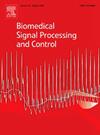Dual consistency semi-supervised learning for 3D medical image segmentation
IF 4.9
2区 医学
Q1 ENGINEERING, BIOMEDICAL
引用次数: 0
Abstract
Semi-supervised learning (SSL) methods can utilize a large amount of unlabeled data to alleviate the problem of scarce labeled data. Consistency regularization as a classic SSL strategy, has achieved significant results in this field. However, due to the low contrast of organ contours in medical images, existing approaches are prone to uncertain predictions at the segmentation boundaries and the hard-to-identify blurry areas. To address these issues, we propose a dual consistency semi-supervised medical image segmentation network (DC-Net). Specifically, it can reduce the prediction uncertainty to obtain low-entropy decision boundaries by performing consistency prediction under model-level and task-level perturbations. We first design a cross-consistency loss between the segmentation map and the pseudo-labels across different models, aiming to encourage the models to maintain consistent predictions in blurry areas. Then, consistency constraints are applied between the segmentation task and the geometric perception task to construct the geometric contours of the target, thereby obtaining more precise boundary distance information. The experiments on four public medical image datasets (including LA, Pancreas CT, ACDC and PROMISE2012) demonstrate that DC-Net has achieved the state-of-the-art performance over other advanced semi-supervised methods.
求助全文
约1分钟内获得全文
求助全文
来源期刊

Biomedical Signal Processing and Control
工程技术-工程:生物医学
CiteScore
9.80
自引率
13.70%
发文量
822
审稿时长
4 months
期刊介绍:
Biomedical Signal Processing and Control aims to provide a cross-disciplinary international forum for the interchange of information on research in the measurement and analysis of signals and images in clinical medicine and the biological sciences. Emphasis is placed on contributions dealing with the practical, applications-led research on the use of methods and devices in clinical diagnosis, patient monitoring and management.
Biomedical Signal Processing and Control reflects the main areas in which these methods are being used and developed at the interface of both engineering and clinical science. The scope of the journal is defined to include relevant review papers, technical notes, short communications and letters. Tutorial papers and special issues will also be published.
 求助内容:
求助内容: 应助结果提醒方式:
应助结果提醒方式:


